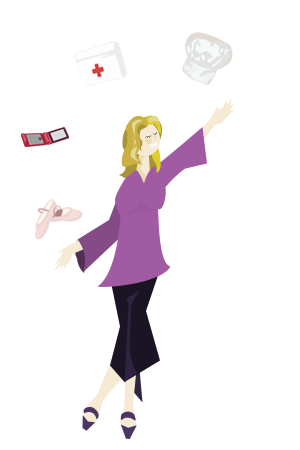This session is on pulling back the curtain of online advertising. I’m a little worried it will be more basic than I need, but I’m interested in hearing the perspectives of the ad network managers on the panel. Everyone wants to know how to make money from blogging. This one is all about selling real estate on your blog. It is a live blog so it is completely unedited—I’m just taking notes as we go.
Speakers
Mary Anne Beasley, @thestilettomom
Melanie Sheridan, @adramaticmommy
Michelle Lamar (Gloss Inc), @michellelamar
Tsh Oxenrider, @simplemom
Paula Bruno, One2One Network, @paulabruno
Content is king.
Develop a niche. Keep it uncluttered—advertisers don’t want to invest in “real estate” on your blog when the sidebar is full of clutter.
Melanie: Give yourself permission to not write every day. When you do write, write well.
Clean up your act.
Paula: You want to make it easier for advertisers to want to advertise on your blog.
Tsh: You don’t need a lot of sidebar, chotsky widgets if you want to make money on your blog.
Melanie: Consider your theme—be sure it is advertiser friendly. Find something that is clean and supports where you want to go.
Be careful what/how you review.
Mary Anne: Advertisers want to be sure you are not writing things that conflict with their ads.
Know Your Stats
Mary Anne: Be ready to tell people how many people you reach.
Tsh: Be able to speak to your “influencer” status. It isn’t always about the numbers. If your readers are extremely loyal or you are influential in some way, be able to present that information.
Mary Anne: Talk about what kind of social footprint you have.
Key words you need to know
CPM: Cost per thousand pageviews
Market averages: Widely varies, typically higher for a niche. This session is using a $5 average CPM.
Uniques vs. Pageviews: Unique is number of individual people coming to your site. Pageviews is how many times your site was viewed total. You sell pageviews, but advertisers typically want to know about uniques.
CTR: Click Thru Rate—the percentage of pageviews that actually clicked to the site.
CPC: You only get paid when someone clicks.
Comscore: The Gold Standard among ad agencies, but you have to be a big site to be measured. Also use Quantcast.
What do you do when your stat counters are so different?
Mary Anne: Use the one that makes you look better and see if you can get away with it.
Tsh: Most companies understand Google Analytics better so I just use that.
What is an Ad Network?
Mary Anne: Sell ads for a group collectively. (Glam, BlogHer, Juicebox Jungle, etc)
Pros/Cons: You get big brands advertising and it makes your site look good. You also have less control, though.
Expectations: You need to stick with your content niche. Most will require above the fold placement. Some won’t let you have reviews on the site.
Different ways to make money: Some will offer editorial integrations.
Melanie: I have to weigh how much I want to write about the topic vs. how my readers will feel about paid editorial content.
Read the fine print!
Mary Anne: The devil is in the details.
Paula: Think about what you really want to do over the course of the contract.
Tsh: Runs only private ads for complete creative control. More time consuming.
Michelle: Be very specific about your audience to filter out ads.
Mel: “This is why I go through an ad network.” Willing to give up 50% of revenue to ad networks in exchange for extra time to spend on content & community.
How much should be charging for CPM ad?
Tsh: Works with small businesses who can’t afford higher rates, but that’s who she wants to support.
Audience: Federated sells mom blog ads for $10-15 CPM, and pays us half.
Mary Anne: It depends on the blog, the niche and the market.
Final Thoughts:
Michelle: Keep track of your stats. Don’t sell yourself short.
Mary Anne: It’s a business. You have to treat it as such.






